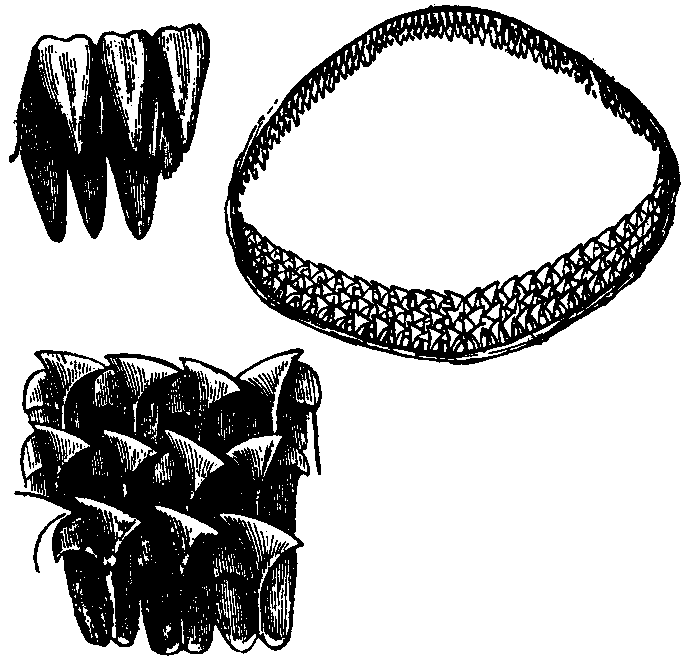Nat Geo Sharkathon | '50 Shades of Sharks': 10 surprising facts about the elusive, carnivorous Greenland Shark

The oceanic expanse surrounding Greenland is home to a variety of species of sea life — some relatively new while others date back to at least thousands of years in existence. As part of its annual 'Sharkfest', National Geographic has brought to focus some of the rare behaviors displayed by shark species from across the world in the documentary '50 Shades of Sharks'. One among them is the enigmatic Greenland Shark, found in the arctic waters of the country discovered by the Vikings, Norway and even Canada. These sharks aren't exactly the best-looking of the bunch, but they are the second largest carnivores after the Great Whites. The Greenland Shark has earned itself several nicknames on its appearance alone, the 'gurry shark', 'grey shark', 'sleeper shark', or even the Inuit name, 'Eqalussuaq'.
These sharks are sluggish looking and their colors range from a dull grey to brown. They are large bulky creatures with rounded snouts, gaping mouths and small fins relative to their body size. Greenland sharks have been listed as a near-threatened species by the International Union for Conservation of Nature. Once greatly valued for their liver oil, they were commercially fished from the 19th century until the 1960s. Not much is known about these ambiguous fish that live in icy habitats, but here are 10 surprising facts about them.
They are extremely elusive
While it has been around for millennia, the first time the Greenland shark was ever captured on film was in the Arctic in 1995. However, it wasn't until 2003 that video images of these sharks were recorded, where they were seen swimming in their natural habitat. If one were to take a cruise around Greenland, chances of spotting this shark species are very low.

Colder the water, the better
Greenland sharks are native to the icy waters around Greenland, Canada and Iceland. As the only true sub-Arctic shark, they are also the only sharks that can tolerate extremely cold temperatures all year long. They prefer waters hitting a temperature between -1°C and 10°C (30.2 to 50°F), and when summer sets in they tend to remain in the depths of the ocean where the water is the coldest. During winter, they resurface because the top layer is colder than the ocean floor.
Deep divers
One of the main reasons that the Greenland shark makes infrequent appearances is because it is usually resting at the bottom of the ocean. They have been observed to migrate from the ocean's surface to at least 7,218 feet into the ocean's depths. They are also sometimes seen resting atop continental shelves and slopes deep inside the ocean.
They don't harm humans
Since they live deep in the Arctic waters, Greenland sharks rarely ever encounter people. Despite being large enough to easily injure or kill a human being if they feel threatened, historically they have been known to be non-confrontational. There are some Inuit legends that suggest that Greenland sharks have attacked many kayaks, but it is unfounded because there is not one documented case of such an encounter that has taken place.
Eyeball parasites
As repulsive as it sounds, it is common that these species of sharks live with worm-like parasites in their corneas. Copepod Ommatokoita elongate is a parasite that latches onto the Greenland shark's eye and destroys the corneal tissue, leaving it with a partially-blinded sight. This isn't much of a hindrance to the Greenland shark that lives in deep waters where light seldom penetrates. So it uses its other sensory organs to get around and scour out prey.

Butcher knives for teeth
The Greenland sharks' teeth are specially designed to cut off chunks of flesh. The teeth on the upper jaw are more narrow, pointed and smooth, while the bottom jaw has teeth that are larger, broader and curve sideways. By swinging its head back and forth in a circular motion, the Greenland shark can cut a round chug out of its prey or spoil.
Taking it slow
The Greenland shark is known for its extremely slow and sluggish pace. With an average cruising speed of 0.76 mph, they are easily one of the slowest swimming sharks in the world. Although they never seem to be in a hurry, they have their moments of short bursts of speed. This is also why they've earned the nickname 'sleeper sharks'.
Long live the sleeper sharks
Yes, a turtle's lifespan crosses the 200th mark, but Greenland sharks break the longevity record of every known vertebrate. Scientists over years of research have discovered that Greenland sharks live up to 400 years or more.

Poisonous meat
The flesh of the Greenland sharks contains high levels of trimethylamine oxide or TMOA. When consumed, the flesh breaks down during digestion, into trimethylamine (TMA), which causes intestinal distress as well as neurological problems similar to extreme drunkenness. A high level of consumption of Greenland shark meat can result in convulsions and death. However, the meat is a delicacy named Hákarl in Iceland, where it is properly prepared and the toxins are disposed of.
Folklore
The Greenland sharks are the basis of popular forklore. The shark's poisonous flesh has a high urea content and as the legend goes, an old woman washed her hair in urine and dried a cloth, which blew into the ocean and became a 'Skalugsuak' or the first Greenland shark. Another legend talks about a girl whose father cut off her fingers while drowning her. Each of her fingers is said to have turned into a sea creature, including the 'Skalugsuak'.
'50 Shades of Shark' premieres on July 20 at 9/8c on National Geographic.










